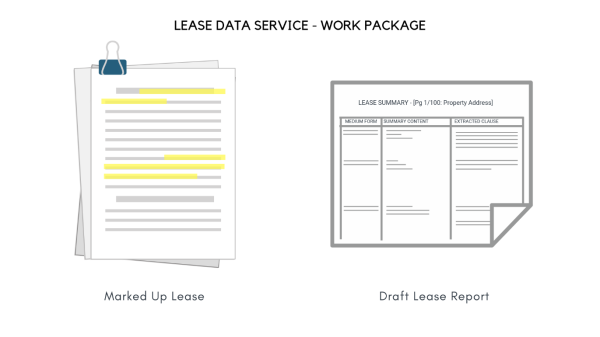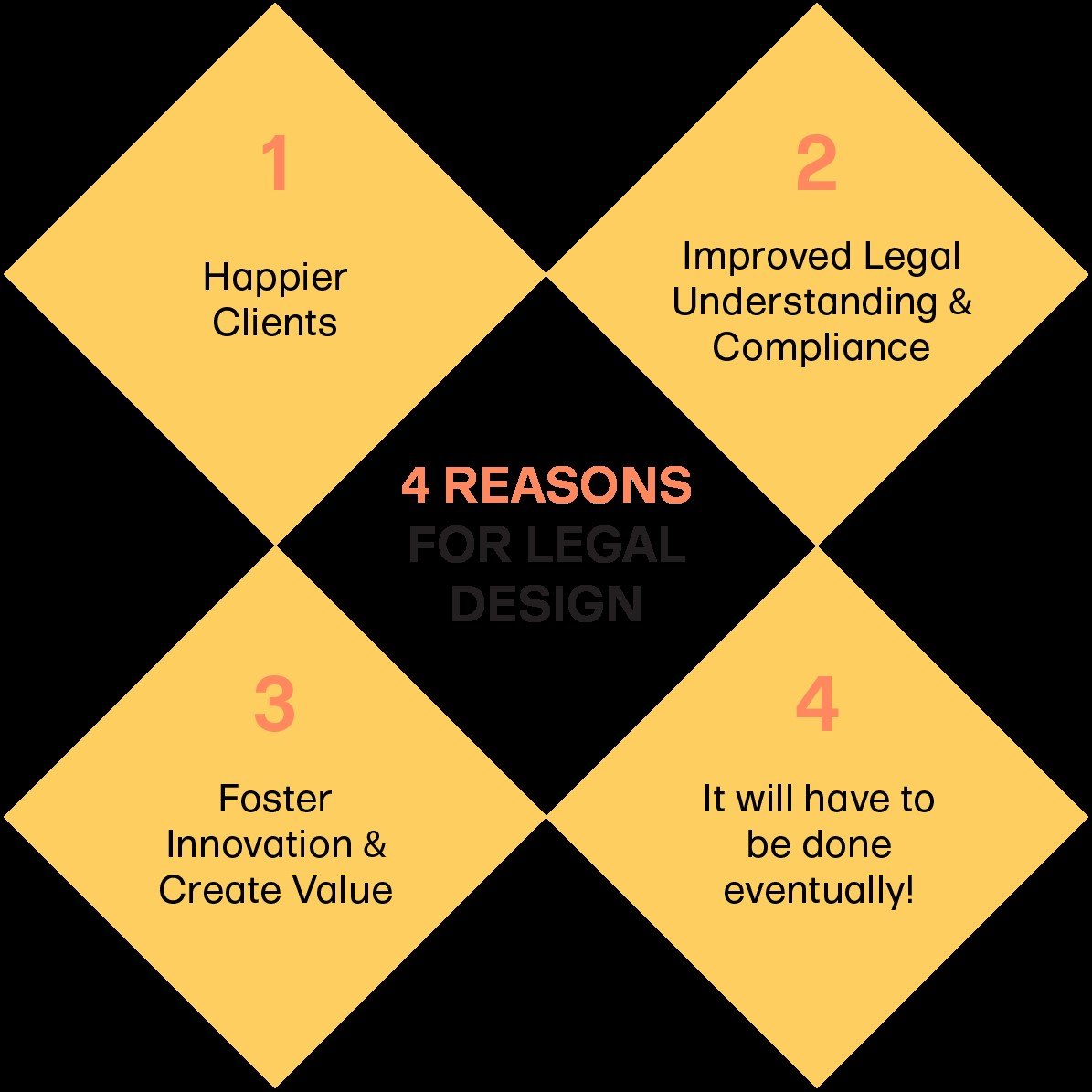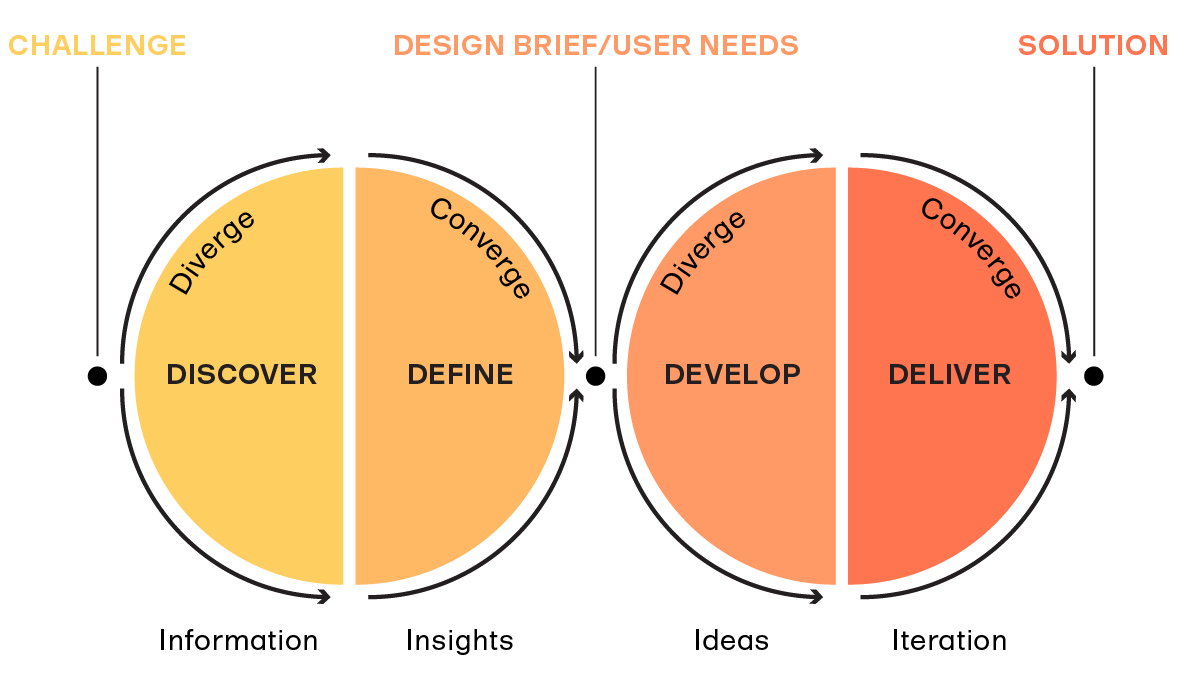Table of Contents
What is legal design?
The aim of legal design is to find an innovative way to explain law that makes it more interesting, easy to understand and more accessible. Legal design, as the name suggests, involves the application of design thinking: it combines experience in the legal field with an approach that comes from the design profession, using graphical representation, clear and simple language and new technology.
The need for legal design stems from a problem that is both extremely old and highly relevant today: how to make laws and regulations easily understandable so people are better able to protect their interests.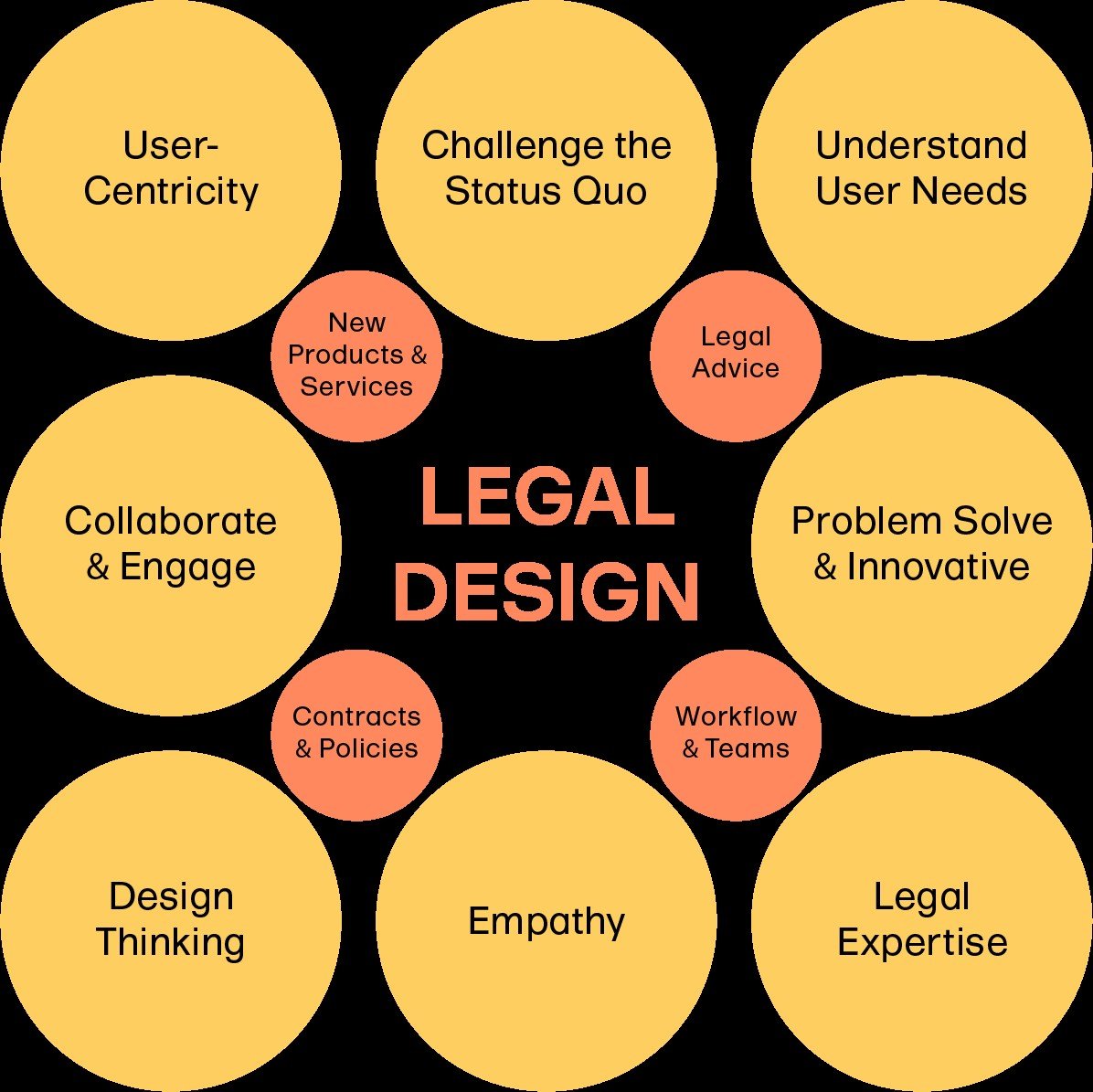
Legal design also means making law more user-friendly. The users of the legal system may be citizens looking for a lawyer, or people who need a legal opinion when drafting a contract, or they could be lawyers themselves, who want to adopt the best legal solution to offer to their clients. Legal design helps to create empathy with users, who as a result feel better placed to understand how to achieve their goals.
Take contracts, for example. Since they are usually very long, detailed and difficult to take in, instead of bothering to read them we often go straight to the final signature (a prime example of this is the Terms and Conditions on websites). This happens because contracts are written by legal experts to be read by other legal experts. Rethinking a contract from the point of view of the actual user (i.e. the person who has rights and responsibilities deriving from the contract itself) provides new ideas on how to structure its content. Using legal design in this context can mean simplifying the language, removing jargon, including tables of contents and adding graphical representations of certain information through diagrams, icons, timelines and images. This helps to engage users, increases the clarity of the information and in general aids understanding.
Why do we need legal design?
- It makes clients happier—Putting yourself in your customers’ shoes, understanding their needs and offering something understandable and valuable tends to be greatly appreciated by clients. Listening to customers and working together to create accessible, tailor-made solutions increases their trust in your business.
- It increases understanding of and compliance with the law—If users are offered a simpler and more interesting legal product (such as a contract), they will feel more secure regarding their rights and responsibilities and will be able to understand and comply with the agreements they are entering into. At a large scale, this may lead to better levels of compliance with the terms of the contract and fewer disputes. It also potentially allows the creation of a legal system in which citizens play a more active role.
- It promotes innovation and value creation—Many professionals (and indeed non-professionals) have good ideas and suggestions to make, but often lack the necessary technical skills to express them. Legal design offers a platform for these people, opening the way for opportunities and improvements. This new system could act as a way of developing existing services.
Legal design is a useful resource. Nowadays, as well as considering and implementing legal design, companies are increasingly exploring a ‘human-centred design‘ approach, for three reasons:
- People are sick of complex legal documents. Human-centred design is now standard at all the biggest companies (such as Apple, Google and IKEA), which provide us with impeccable products and services. People are rapidly getting used to ‘simplified’ commercial relationships, and we now expect this approach to be extended to all areas where there are relationships governed by laws.
- Users are increasingly demanding in what they expect from their lawyers and solicitors, while wanting to pay less. This means that legal experts have to evolve to offer services that meet the specific requirements of clients. Legal design helps to highlight the things that are truly important for customers.
- Legislation itself is starting to demand legal design. For example, the 2016 General Data Protection Regulation (GDPR) states that all privacy policies must be concise, transparent and written in plain language.
What does legal design involve?
Legal design makes use of various tools and methods.
- Divergent thinking and convergent thinking. This process is developed in two stages: the first (divergent thinking) involves coming up with numerous ideas based on a single concept or piece of information. In the second phase (convergent thinking) a single solution is then generated by combining lots of data and information. In any legal design project it is important to take advantage of both stages to grasp the essence of the problems that need to be overcome before resolving them through ideas and solutions.
- Empathy and understanding the problem. Users must always be at the centre of design. Empathy is used to put yourself in the shoes of users and understand the problem from their point of view. To achieve the optimal solution, you need an in-depth grasp of the issue, which can be achieved by analysing every single aspect of the user experience.
- A varied team. Having a team made up of people with a diverse range of skills is crucial to ensure the best possible solution is developed. In general, you need highly specialised people (in fields like IT, psychology, law and design), as well as professionals who can represent users.
- Graphical representation. The way information is presented influences how it is received and assimilated. In legal design, the presentation of information is a vital part of both the process and the solution: the process involves outlines, drawings, sketches and case studies, while the solution can present diagrams, icons and images (choosing the language that works best for each specific project).
- Language. As a general rule, legal design seeks to simplify the use of language, avoiding jargon and making the structure of the text easier to navigate.
- Technology. As in virtually every field nowadays, technology can improve legal design solutions, making them interactive and accessible through digital platforms. In addition, technology makes innovation easier.
What does legal design look like?
Let’s have a look at some examples of legal design that employ various different techniques.
Case study 1 – Comic Contracts
Robert de Rooy, the founder of Creative Contracts (https://creative-contracts.com/), created an innovative way of drawing up employment contracts using cartoons.
The idea came from seasonal agricultural workers; as these people tend not to not have a lot of reading experience, a long and detailed written contract was not a good solution. Workers often signed their contracts without understanding the terms and conditions.
The solution was to create a ‘comic contract‘ that presented the employees’ rights, duties and tasks in their work. Drawing, an almost universal language, proved to be very effective, and the company has now developed twelve different contracts with over 2,500 signatories.
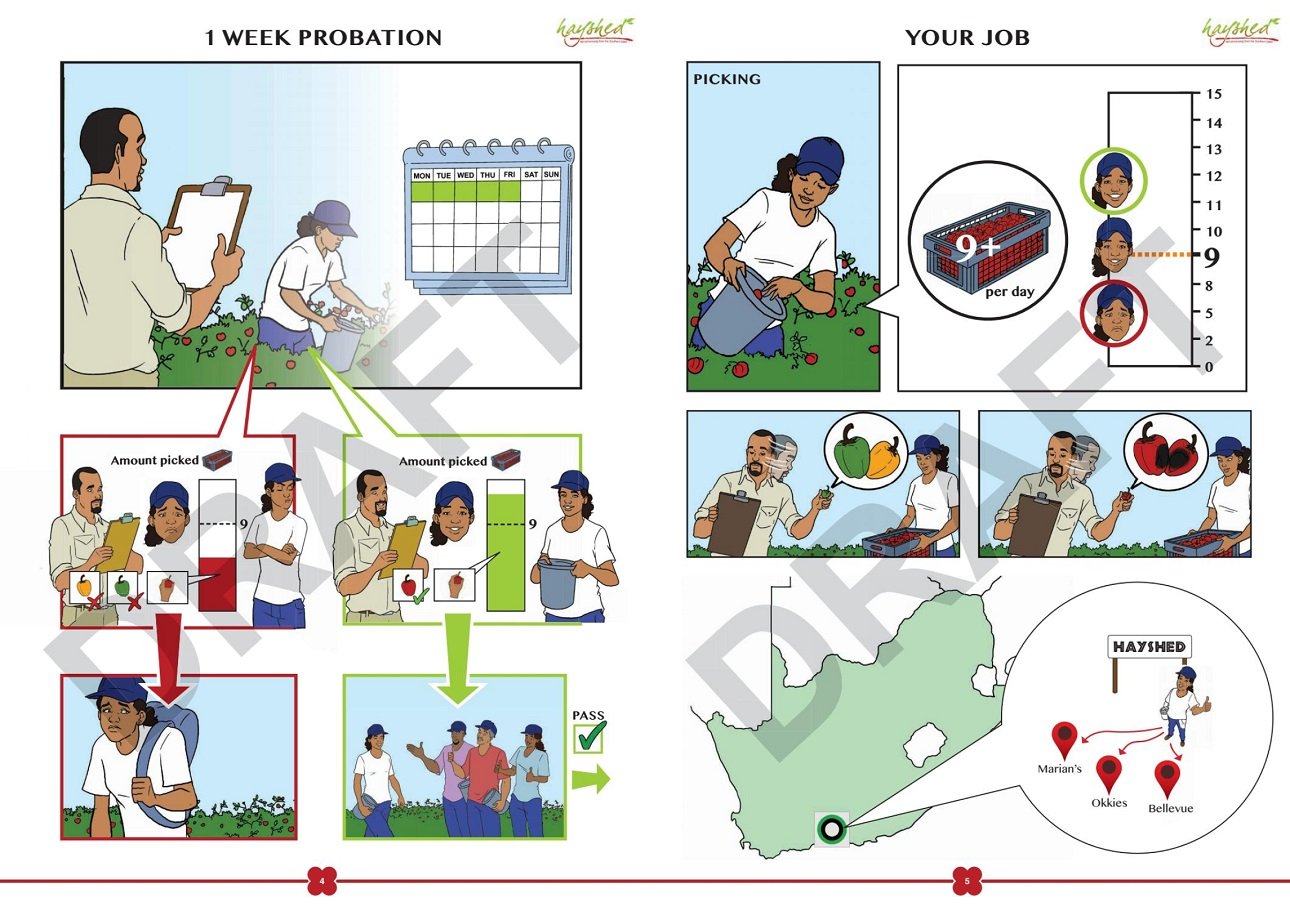
Case study 2 – Privacy Policies
Following the introduction of the new GDPR rules, many businesses updated their privacy policy. The logistics software company Juro (https://juro.com/), a trailblazer in the field of legal design, was no exception, and decided to create a user-centred document.
The challenge was to create a policy that was robust and serious, while at the same time being easily understandable to all. Juro created a simple and direct interactive document that incorporated various sections and levels, icons and timelines.
This led to increased satisfaction from the company’s clients, as they found the policy genuinely easy to understand, as well as providing advertising for the business, helping to attract new customers.
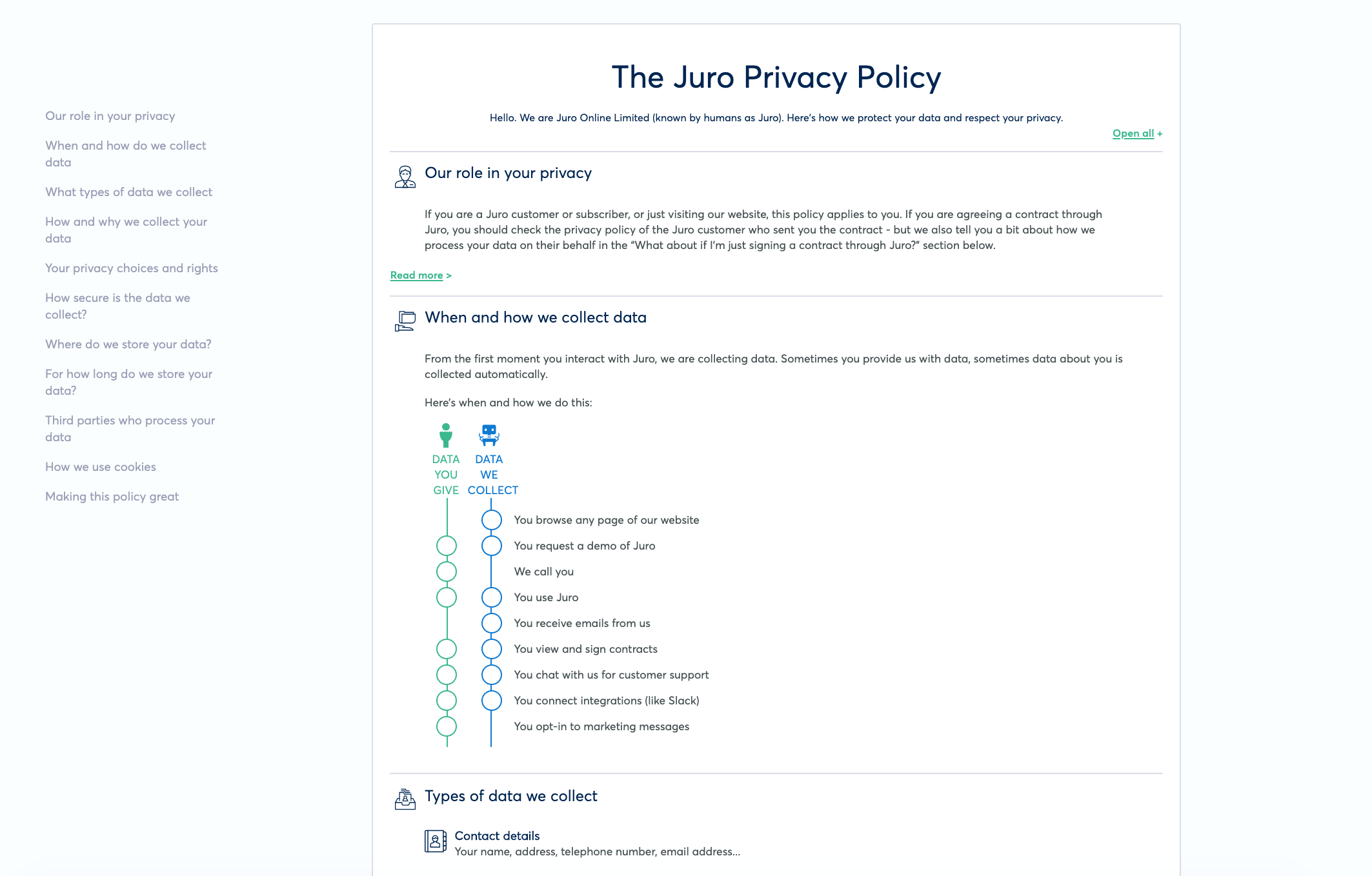
Case study 3 – Revising and filing property contracts
One of the most demanding tasks for the legal team at any estate agent is renewing rental agreements and preparing the relevant documents for clients. In many cases, the contracts are analysed and updated by hand, a process that takes several hours.
Wavelength (https://www.wavelength.law/) worked with an estate agent in London to improve their contract renewal process, and created a ‘work package‘ divided into two templates. The first (Marked Up Lease) is the renewal contract itself, with the relevant parts automatically highlighted. The second (Draft Lease Report) contains the highlighted parts organised in a table in Word. This allows solicitors to deal solely with the second document, speeding up the process. And because the final product is summarised in table form, it is also easier to consult.
The ultimate aim of legal design is therefore to improve legal practices and the processes used to draft laws and contracts. In addition, as a user-centred discipline, it seeks to improve the experience of everyone who comes into contact with legal products and contents. Legal design is important because, if the method continues to be embraced ever more widely, it will help to improve people’s understanding of their rights and responsibilities.